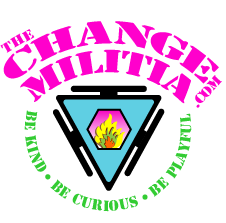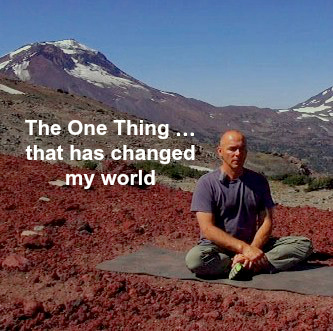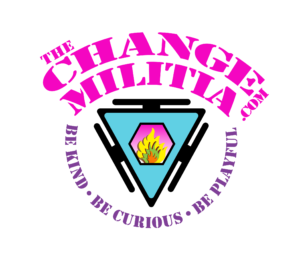I am learning to choose to stay on a path toward ever-increasing happiness, fulfillment, intimacy, and success by maintaining an awareness of what I am feeling. Learning to discern subtle sensations and how those feelings and labels begin to change or transition.
I am not talking about getting in touch with my feminine sides or picking the scab of some previous emotional wound. I am talking about increasing subtle awareness so I am able to feel what is influencing me in the moment.
WHAT I am feeling, not HOW I am feeling. No story. No drama; sensations.
I’ve been trail running in a new way. I monitor my inner momentum and run in bursts. I start out walking and begin to assess the state of my body, mind, and emotions. I discern. I feel for the parts of me I want to grow, things like kindness, gratitude, strength, agility, and endurance. I feel for the parts of me that I love. As I do, energy starts to move. I feel it in my belly, my throat, and in a spot between my eyes. It is the feeling of passion, the love of life: my life. When it reaches a certain level I start to run, fast and bounding. I run until I have expended that built up energy and start to lose concentration. And then, I begin to walk again starting the process anew. This process, feeling, building, bounding, and rejuvenation, is also working for me in all of the other areas of my life.
Here is how it works: The sensations I feel determine my emotions. Emotions determine my energetic configuration and my configuration determines how I interact with others, my environment and myself. Energy Configurations are tags we can assign to the ways we absorb, resist, repel, deflect, attack or counter-attack incoming stimuli (action, emotion, and thought). Each of my configurations has a feeling, a set of sensations and emotions that I associate with it.
Some of my configurations support growth and fulfillment; others move me away from my intentions and shuttle me back to a place of familiarity and mediocrity. In the running example above, I am generating configurations that support my intention and trajectory toward ever increasing happiness, fulfillment, intimacy, and success.
13 Energetic configurations:
- Stagnant – Low, weak and unmoving, stuck, lethargic, depressed;
- Compressive – Pent up, tense, strained, holding back, capitulated, constipated, repressed;
- Expansive – Growing, glowing, ecstatic, generous, blissful, elated, expressed;
- Transitional – Shifting, changing, unstable, mutable, transitory, evolving;
- Isometric – pushing/pulling, conflicted, passive aggressive, actively nonmoving, antagonistic resistance;
- Isotonic – Unbalanced isometric, concentric, eccentric, tension with motion, movement with resistance;
- Fluid – Effortless, flowing without resistance, carefree, fearless, relaxed, confident, empowered;
- Fluctuating – Unresolved, variable, searching for balance, irregular, undulating, vacillating;
- Percolating – Compressed but beginning to move, awakening;
- Explosive – Volatile, hyper-reactive, highly unstable, oppositional;
- Scattered – Unfocused, multi-directional, tangential, spacey;
- Bleeding – Leaking, dissipating, deflating, oozing;
- Accumulating – Drawing in, actively ingesting with limited expansion, pressurizing.
When we can increase our ability to identify which configuration is present, especially the transitions, we can regulate our mental and emotional posturing. Posturing is the habits of our personality that limit productivity, efficiency, connection, intimacy, healthy discomfort. As we regulate our posturing, we lower our resistance to progress, growth, and beneficial adaptation. Using my running example again, I am searching for the growth oriented aspects of what I am rather than the habitual ways I limit myself. If I started walking and began searching for physical, mental, and emotional reasons I should not run, I would undoubtedly find them. If I looked for justifications on how and why I suck as a trail runner, athlete, father, partner or person, I would find those too. That energy would build creating a resistance to running.
We instigate a healthy action instead of waiting for our habitual, less than optimal, reaction.
For example, the sooner we can feel ourselves moving from Fluid to not-fluid, the easier fluid is to regain. If we are moving from fluid, we are moving toward something else. We are transitioning. When we discern Transitional, we can determine if this change is in-line with our intentions. If it is, great, if not, we make a decision to alter our configuration.
In my running example, I wait for the momentum to build and then start bounding down the trail. At some point, I begin to lose focus. I transition from fluid to scattered. Scattered is the place where injuries are born. Being able to discern the transition and making a decision to regain fluid helps to keep me healthy.
Discernment is the primary tool we can use to determine our current state.
Let’s take another of the 13 as an example. If we are feeling stagnant, very little energy will be moving. Stagnation is a feeling, a set of physical sensations in our bodies that we can identify. We start by discerning the qualities of stagnant. What physical cues are present, which emotional labels have we assigned and under what assumptions are our mental faculties operating? When we can identify stagnant, we can start to identify the level or stages of stagnant (totally, very, a little, vaguely) and what the physical, mental, and emotional ratio is. We can be very emotionally stagnant but only vaguely physically and mentally. We begin to gain an understanding of what stagnant means to us and what we are doing with the information; information that we configure to feel stagnant.
There is always information coming in, there is never a shortage of energy available to metabolize. The result, stagnant, is a choice we are making. It may not be conscious and it may not be instantly or easily changeable but it is a choice. When we allow that we choose our energy configuration, we will concede that we can choose differently, more productively.
When we get to a place where we feel ourselves transitioning toward physical, mental or emotional stagnation, we can learn to get our energy moving and circumvent stagnation as a destination.
We can respond to the transitions instead of reacting to our habitual dispositions.
Here is an example using the mood indicator Compressive and the typical tension associated with stress: when we feel tense, that tension must exist somewhere in our body. Maybe, we can identify some tension in our shoulders, maybe our diaphragm is tight causing us to breathe shallowly and maybe we are drawing our eyebrows together and scowling. Mentally, we might judge ourselves stressed. Emotionally, we may feel overwhelmed. We may connect this compressed feeling with previous experiences or future fears. There will be many sub-components to every indicator.
Parts all have parts and the parts of the parts is the place where everything starts.
We can begin deconstructing our tension by disconnecting the physical from the mental and emotional. We can let go of our attachment to the labels stressed, tense, and overwhelmed. We stop giving value to the label. We aren’t tense because tense isn’t a thing; it is a word whose definition we have given value to. If we let go of the value we have given it, it ceases to exist. The underlying stimuli might still be there and we can address those by identifying the physical components (sensations) actually present.
We can create movements whose intention will be to de-tension the tense tissues. As we loosen our neck, back, and shoulder muscles, our mental, and emotional energy configurations will shift as well because some of the ingredients of our labels are changing. As we let go of the mental label, we break the connection to our image of ourselves as stressed, tense, and over-wrought. The more components of the configuration we can deconstruct and alter, the less of a connection there will be … until before too long, the connection (physical, mental, and emotional tension) and the label no longer exist.
Final Consideration – Awareness of our energy configurations and the qualities of our sensations will help us to determine if our current configuration is in-line with our intentions. With awareness comes the presence to make a choice.
Identifying our energy configurations starts with awareness and grows into a habit with practice. The sooner we can become aware of our habitual indicators, especially the transitions, the more efficiently we can respond. We will waste less energy, maintain our momentum and grow healthy, wealthy, and wise.
“Some men enjoy the constant strife,
Of days with work and worry rife,
But that is not my dream of life:
I think such men are crazy.”
James Weldon Johnson,
Fifty Years and Other Poems (1917)




